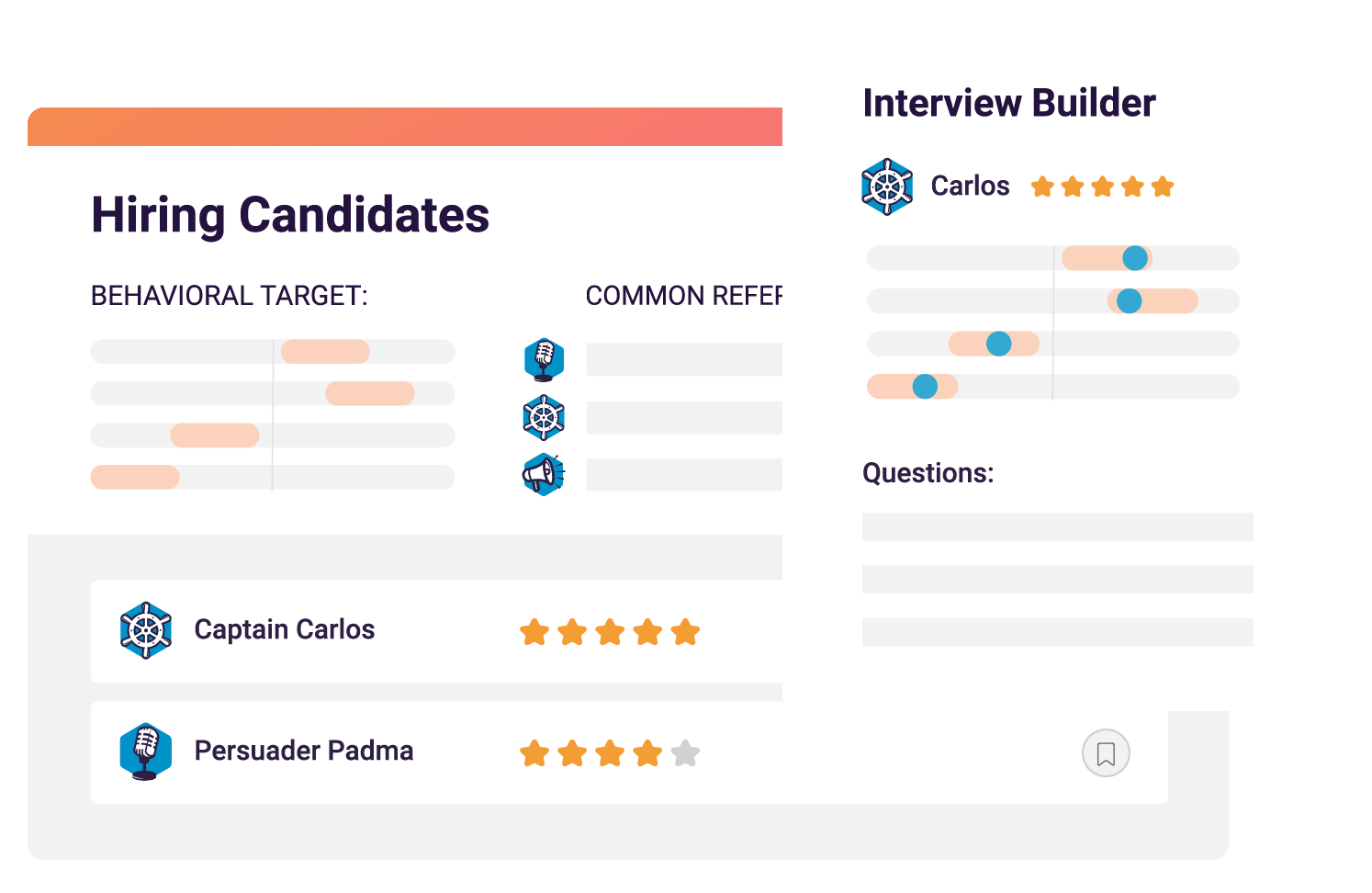Are you struggling to identify the rising stars within your organization?
Many businesses falter because they can’t pinpoint their most valuable assets – their talented employees. This lack of clarity can lead to underutilized skills, decreased morale, and even high turnover rates. Imagine the frustration of watching your competitors thrive with well-nurtured talent while your own team feels overlooked and undervalued.
Performing a thorough talent review can revolutionize your approach, ensuring you recognize and develop your top performers, align their growth with company goals, and ultimately drive your business forward. Ready to transform your workforce dynamics? Let’s dive into the step-by-step process of conducting an effective talent review.
What is a talent review?
A talent review is a strategic process used by organizations to assess and evaluate the skills, performance, and potential of their employees. This review typically involves managers and HR professionals discussing employees’ strengths, development needs, and career aspirations.
It is different than the typical performance review. A talent review asks business leaders to assess employees across the organization on performance and future potential.
Completing a talent review helps companies uncover talent gaps and identify high potential employees. The insight you gain allows you to make strategic talent decisions and plan for your company’s future.
For example, let’s say you want to build bench strength so you have employees ready to step in and fill leadership vacancies. In a talent review meeting, you’ll identify high performers who exhibit most of the needed traits and skills, while also pinpointing any gaps they need to close. The result? You know where to focus your coaching and development efforts.
What’s more, talent reviews open the door to many important conversations (e.g., What matters most to us as a company? What are managers missing when assessing their direct reports?).
Who should perform the talent review?
Who should perform the talent review depends on the size of your company.
Here at The Predictive Index®, the first talent review we did assessed roughly 60 employees. At the time, our company was much smaller than it is now, so our executive team had sufficient line of sight into each employee’s work. Because of this, our senior leaders—including our head of human resources— headed up the talent review.
As our headcount grew to more than 100 employees, we added directors to our talent review since our executives didn’t have the same visibility into each employee’s performance.

How do you establish criteria for your talent review?
The criteria you cover in your talent review depends on your specific needs and values. Your leadership team should align to identify your “must-haves,” your “nice-to-haves,” and your “non-negotiables.”
At The Predictive Index, the top five criteria we rate employees on are:
- Outsized impact. Does this employee impact the organization beyond their role, experience level, or compensation level?
- Proven leadership. Does this employee inspire others and make those around them better?
- Decision making. Is this employee strategic? Can they plan over time or do they have more of a short-term focus? (How this is graded depends on an individual’s role.)
- Compensation productivity. Is this employee’s productivity in the 90th percentile for their pay range?
- Fit to role. Does this employee have the skills, experience, behavioral match, and cognitive fit to excel in this role completely?
We also consider additional criteria that we believe matters, but not as much as the top five:
- Promotability and adaptability. Does this employee have the potential to move up in the organization?
- Quality and timeliness of work output. Is this employee producing quality work in a timely manner?
- Great attitude. Is this employee driven and committed to our vision? Do they maintain an attitude of curiosity instead of judgment?
- Likeability. Is this employee enjoyable to work with? Do they add to the culture of the organization? Do they bring positivity when confronted with a challenge?
- Reach across the company. Is this employee connected to people on other teams? Do they work cooperatively with other departments?
Finally, we consider what we believe is non-negotiable:
- Good attitude. Does this employee have a good attitude, or do they trigger our “no jerks” clause?
- Ability to solve problems in their field. Does this employee show good problem-solving abilities, or do they rely on others to tell them what to do?
- Consistent, reliable performance. Is this employee consistently performing, or is their performance variable?
- Ethical and honest. Is this employee trustworthy? Do they do what’s right instead of what’s easy?
Some of the above criteria may apply to your company, and some may not. It’s necessary for your leadership team to align on what matters most to your organization specifically.
In addition, it can be helpful to determine what’s not a consideration during the review. For example, we don’t factor tenure, special or critical skills, or historical know-how into our talent reviews.

Talent review guidelines
Read through the following guidelines to make the most of your talent review process:
Who to rate:
- Employees you work closely with
- Employees you work collaboratively with
- Employees you’ve had meaningful interactions with (positive or negative)
Who not to rate:
- Employees with whom you’ve had few or superficial interactions
- Employees who you have no idea what their job is
- Employees who you’d be rating based on what you’ve heard but not seen for yourself
Rating scale
1 – Below expectations
This employee ranks at the bottom 25% of the company. They should be put on a performance improvement plan or leave soon.
2 – Meets expectations
This employee is not performing below expectations, but also not living up to their potential. They fall into the 25%-50% percentile of employees.
3 – Exceeds expectations
This employee is a great performer who’s growing and contributing. There are no material job gaps. They fall into the 50%-75% percentile of employees.
4 – Far exceeds expectations
This employee ranks in the top 25% of employees. This employee is special and their contribution is significant for their role.
5 – Elite performance
This employee ranks in the top 5% of employees. They are absolutely remarkable in all ways.
Download the above talent review guidelines [template].
Join 10,000 companies solving the most complex people problems with PI.
Hire the right people, inspire their best work, design dream teams, and sustain engagement for the long haul.
How do you conduct a talent review?
To conduct your talent review, send each leader in your organization a spreadsheet with criteria and the names of each employee. Use this template so everyone is clear on talent review guidelines and rating criteria.
For small and mid-sized companies, leaders should be able to assess your talent pool in less than an hour.
Ask the participants to rate each employee based on the criteria. Remind them to leave out those aspects you’ve determined should not be taken into account.
Ask them to dig deep into meaningful interactions they’ve had with employees. Be aware of the halo effect—the likelihood that a positive impression of a person will overshadow any shortcomings.
From there, it may take several hours to compile all the insights, analyze them, and examine the range of scores. During this process, what you’re looking for is:
- any glaring discrepancies
- who your top-rated employees are
- who falls into the bottom 25%
Continue reading to learn more about each of these.

What should you do with the information from a talent review?
The information gleaned from your talent review can be used at the organizational level and at the managerial level.
From developing and refining your talent strategy to career pathing and talent management, talent reviews are a must for any company that wants to optimize its talent to be high performing.
On an organizational level
Disparity in employee ratings
A talent review can bring up disparity in how managers rate employees. The first year we conducted a talent review, we found that different leaders had different expectations of employees. These variations in standards created friction around accountability across the organization. By having a conversation and aligning on our employee expectations, we’ve reinforced our culture and employees can sense that there’s similar accountability across the organization.
If you discover a discrepancy in how employees are being rated, open the topic up for discussion. What does accountability look like in your organization? Does your rating scale accurately reflect your expectations, or is it unclear?
Too many average employees
Only about 5% of your employees should receive a 5 for each criterion. Otherwise, ratings should be fairly distributed from 1-4. If you find you have a bunch of 5s—or the majority of employees have ratings of 3 or 4—ask your leaders to challenge themselves. Do they really believe your company has no stars? No outliers?
On a managerial level
For managers, talent reviews provide valuable insight into their direct reports. For example, a manager may feel a direct report is top-notch, only to find out that other senior leaders don’t see the same effort or potential. This disconnect offers the manager an opportunity to dig deeper.
Maybe there was a blind spot in their assessment of an employee. For example, Employee A may get along with everyone in their department, but have tense relationships with colleagues on another team. This gives the manager an opportunity to address issues they weren’t aware of. (Proactively diagnosing and acting on people data to correct any brewing issues is a key element of talent optimization.)
Or perhaps leaders giving an employee a lower score was overlooking something. For example, if Employee B in accounting is pretty heads-down and only reaches out when they need purchase receipts, a leader might rate them as “meeting expectations.” But they don’t know that Employee B played a major role in transferring to new accounting software, which saved the company thousands of dollars. The manager can then coach the employee on promoting the work they do outside of the team.
Join 10,000 companies solving the most complex people problems with PI.
Hire the right people, inspire their best work, design dream teams, and sustain engagement for the long haul.
Next steps based on scores
Once the talent review is completed and the results are analyzed, managers should receive a report with their direct reports’ scores.
Here’s how managers should respond, based on rating:
1: Put the employee on a performance improvement plan, if they’re not already on one.
2: Challenge the employee to understand their true potential. Reflect on your ability to inspire performance. Are you setting clear expectations? Are you giving constructive feedback? Have you had a career conversation with them?
3: Identify an action plan for development. Be sure you’re having career conversations and helping them establish a career path. Reward their success, and challenge them with stretch assignments. Ensure you’re inspiring performance.
4: For employees who received a rating of 4, recognize and reward them for their work. Identify what would take them from a 4 to a 5. Give them stretch and development assignments so they can grow. Identify motivations and align a retention plan with those motivations.
5: For employees who received a rating of 5, recognize and reward them for a job well done. Clearly identify what motivates these individuals and create a retention plan that’s closely aligned with those motivations.
Over time, you will find your talent reviews become much easier and shorter, as your organization’s leaders become more aligned on what great talent looks like. We hope you found this behind-the-scenes look at how PI conducts talent reviews insightful and are able to leverage these best practices in your own organization.








